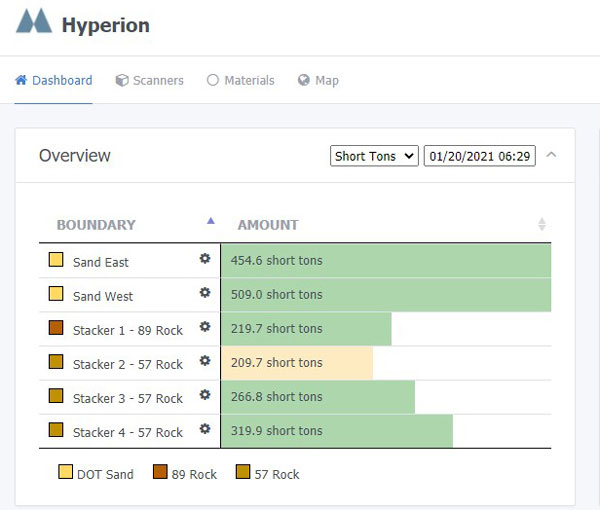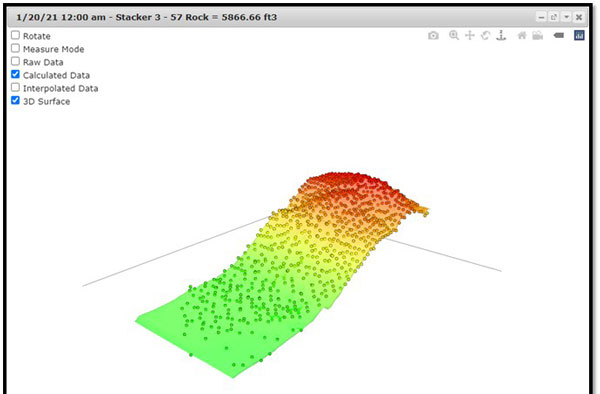For most concrete producers, high-tech inventory management is well worth the investment.
by Craig Yeack
As ready-mix concrete professionals, we are responsible for a perishable, structural product used in the vast majority of modern, global infrastructure. Further, we have to manage fulfillment despite erratic disruptions imposed by supply, demand, manufacturing, transportation and environmental conditions. Time matters. Inventory matters. Let’s take a look at the financial implications when they collide.
Squint hard and consider the perfect world for a moment: A 100,000 cubic yard per year plant that produces a basic six-bag mix with 200 short tons of cementitious silo storage. Cementitious endurance is ~710 cubic yards, requiring ~1150 short tons of ground storage for various aggregates. At a delivered price of $120 per short ton for cement and $17.50 per short ton of aggregate, the “keep full” inventory value is $43,750, resulting in an annual carry cost of $4,400 using a 10 percent internal rate of return.
Based on the perfect-world inventory carry cost of 4.4 cents per cubic yard, there is not much room to justify fancy tools and software to shift from “keep full” to “don’t run out” inventory management. If you are lucky enough to be co-located with a pit or cement mill, then you can stop reading this article now. The rest of us will be well served to trundle on and consider spikes in demand, trucking disruption, theft, and the time-value of accurate inbound receipts.
HIDDEN COSTS ADD UP
In reality, most plants run with a substantially higher aggregate supply, likely around eight times more than needed to match what’s in the cementitious silos. Aggregate endurance of 8X pushes the inventory carry cost to 18 cents per cubic yard. At this point we are starting to see some savings opportunities to justify investment in tighter inventory management.
Theft happens. Regional variations are extreme, with some major metropolitan areas experiencing up to 2 percent “lost aggregate” versus virtually no theft in others. If you are in a theft prone area, 2 percent loss on about 3,200 lbs. of aggregate works out to 56 cents per cubic yard.
During peak demand, plant folks are busy just shipping concrete and keeping the bins full, and inbound material is often ignored. If one out of 10 loads ultimately fails to be receipted, don’t think you are saving 10 percent on materials. The issuing company will indeed bill you: In fact, with poor inbound reconciliation, you will have no idea when they are accidentally overbilling you.
Manual reconciliation after the fact by the accounting department easily requires two minutes per inbound load when we include the time needed to chase “lost” tickets. At a fully burdened rate of $75,000 per year for an accountant, that means $1.20 per bulk load regardless of cement or aggregate. Given that a little more than half a bulk load is needed per load of concrete, the cost of reconciliation is about 10 cents per cubic yard.
For our “real world” plant that produces 100,000 cubic yards per year, inventory management costs add up quickly: the 8X ground inventory penalty is $18,200, theft accounts for a $55,700 loss on the high end, and the cost of poor inbound material receipt control is $9,600. Depending upon what ills your plant may suffer, there could be up to $83,500 per year or 83.5 cents per cubic yard of excess spend. That’s a big enough number to matter.
The first step to controlling costs is to understand the material on hand. Long term, drones are inexpensive and essential for monthly or more frequent surveys of ground stocks with software such as Stockpile Reports [stockpilereports.com]. For closer to real time, ground stocks can be measured by scanning, with technology such as the Hyperion [altamusinc.com] LIDAR (light detection and ranging) system. Silo measurement has come a long way since basic rotational shaft indicators provided a binary signal for a given level. Companies like Vega [vega.com] offer accurate, reliable radar solutions.
Once there is a good understanding of current levels, we can then look for “leaks” and either use good old fashion management or new technology tools and integration to plug them. The key is to recognize the cost of inventory and what can be done to reduce it without adding undue risk to fulfillment.




Craig Yeack has held leadership positions with both construction materials producers and software providers. He is co-founder of BCMI Corp. (the Bulk Construction Materials Initiative), which is dedicated to reinventing the construction materials business with modern mobile and cloud-based tools. His Tech Talk column—named best column by the Construction Media Alliance in 2018—focuses on concise, actionable ideas to improve financial performance for ready-mix producers. He can be reached at [email protected].